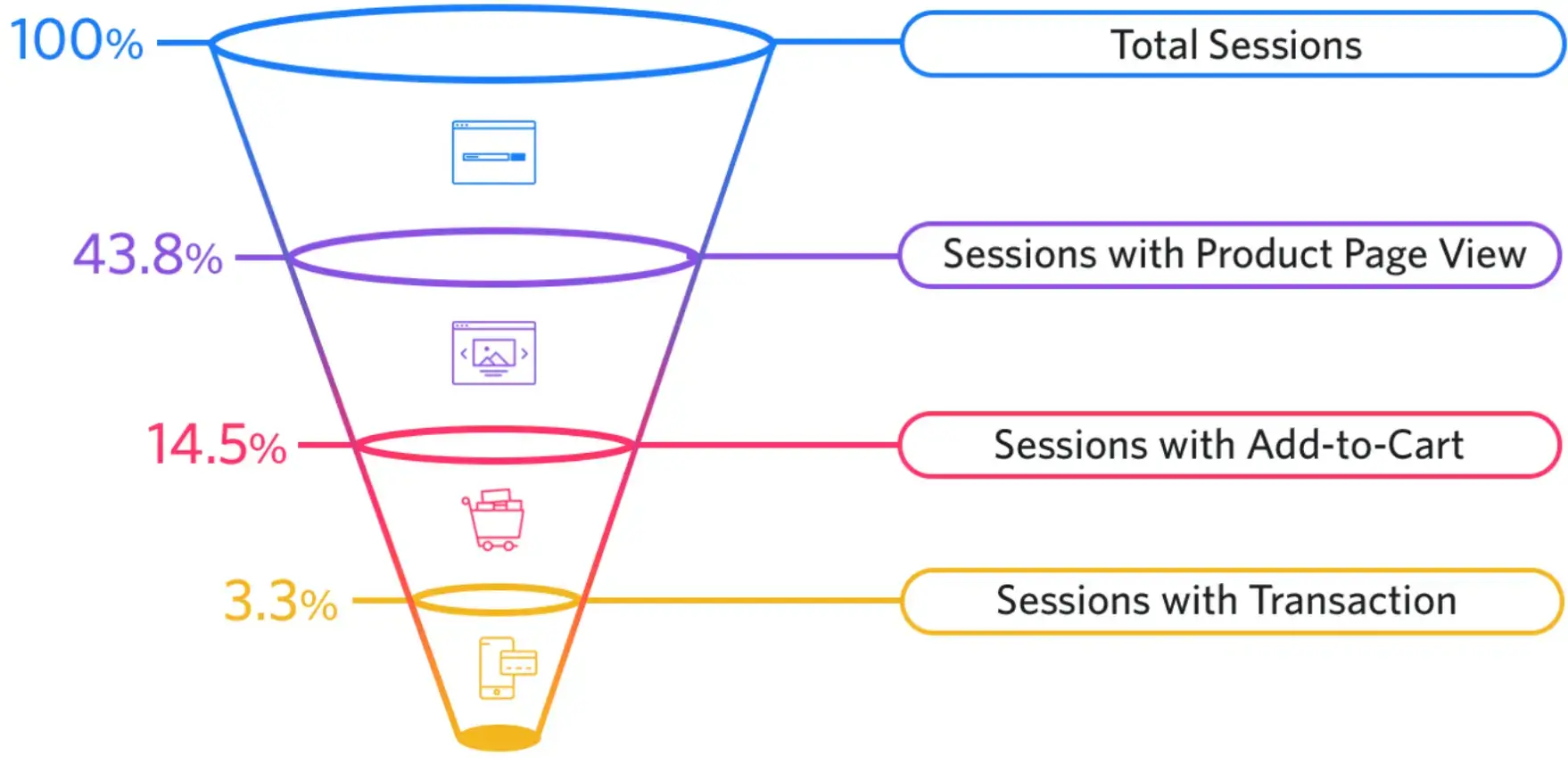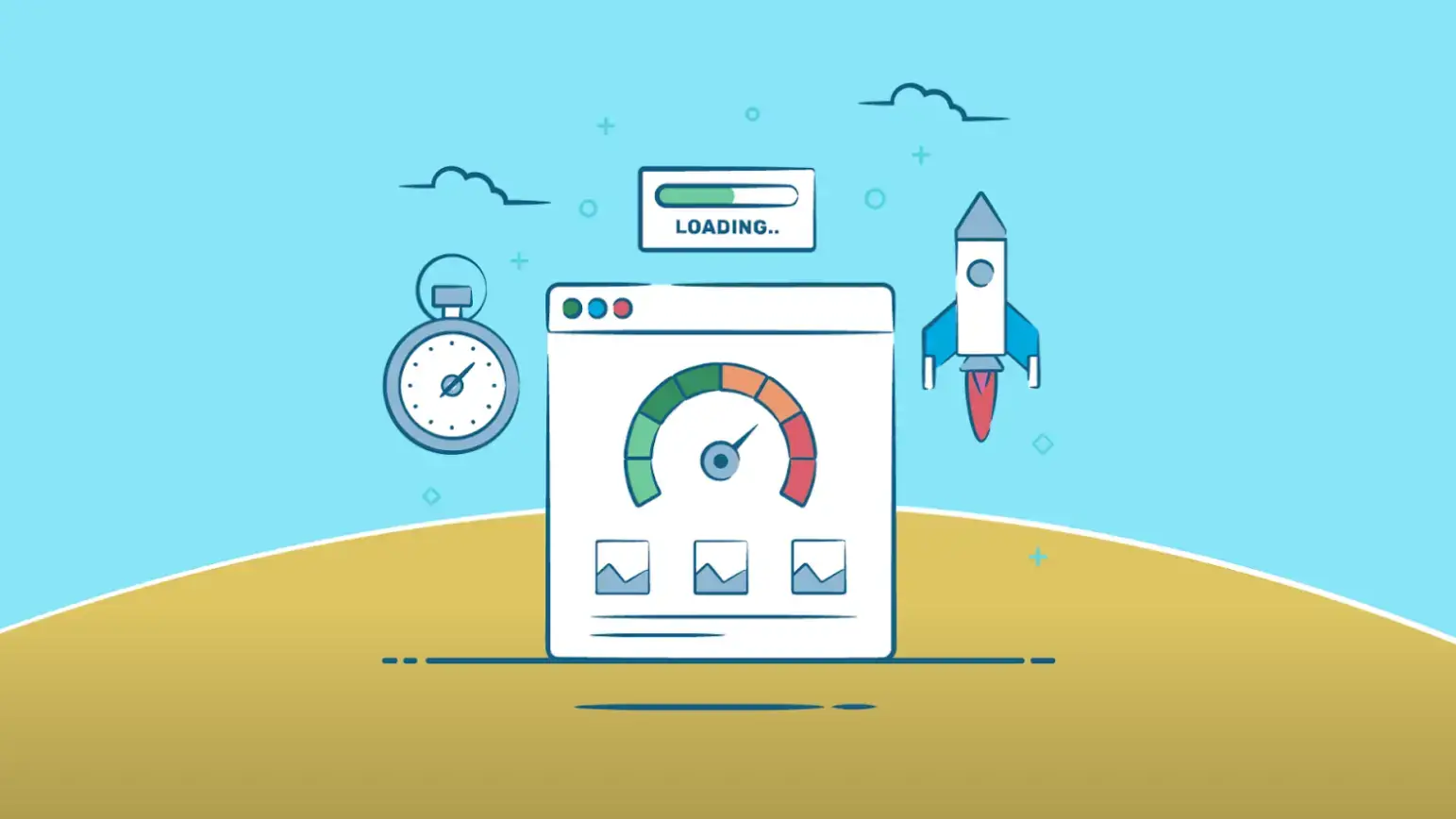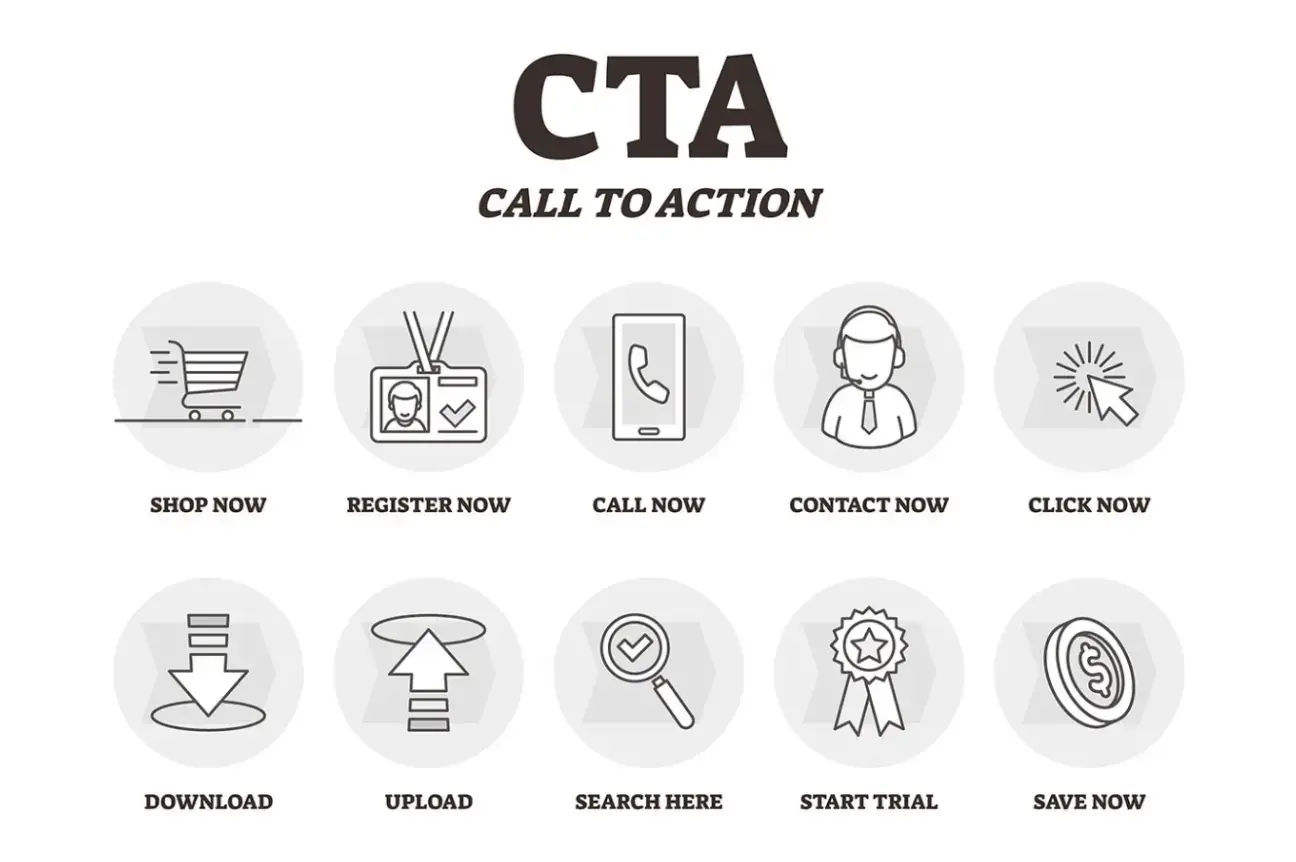The effectiveness of your website is crucial to the success of your eCommerce business in today's digital age. It's measured by your conversion rate, which is the percentage of site visitors who carry out a specific action.
This could be purchasing, downloading a resource, or signing up for a newsletter.
It holds great insights into how your online business performs and how satisfied your customers are.
This article will explore eCommerce conversion rates and provide actionable strategies to enhance your site's performance.
From improving the user experience and product descriptions to harnessing the power of SEO and social proof, let this quick guide help you transform your site browsers into buyers.
Shortcuts:
- Creating Effective Product Descriptions
- Improving Site Speed and Performance
- Crafting Compelling Call-to-Actions
- FAQs

Understanding eCommerce Conversion Rates
In simple terms, the eCommerce conversion rate is the percentage of website visitors who complete a purchase. For instance, if you have 100 visitors and 2 make a purchase, your conversion rate is 2%.
But don't be misled; it's not just about sales.
Any desired action a user completes, such as signing up for a newsletter or downloading a guide, can be considered a 'conversion.'
Understanding conversion rates provides a clear picture of your site's effectiveness and can highlight areas for improvement.
These rates are more than just numbers; they indicate your site's performance and customer satisfaction.
A high conversion rate suggests that you're offering what your customers want, and they're finding it easily.
Conversely, a low rate could signal problems with your site's usability or your product offerings.

Setting eCommerce Conversion Goals
Start with realistic targets. These should be based on your industry standards, historical data, and potential growth opportunities.
Keep in mind you're not aiming for perfection overnight. Small, incremental boosts in conversion rates can have a massive impact on your revenue over time.
Think about what you can do better. Perhaps it's refining your product descriptions, improving site navigation, or optimizing mobile responsiveness.
Set specific, measurable, achievable, relevant, and time-bound (SMART) goals around these areas. Regularly track your progress and adjust your strategies as needed.
Importance of Website User Experience
An exceptional user experience on your eCommerce site is crucial for driving conversions and securing customer loyalty.
Imagine your site as a physical store.
If customers can't find what they're looking for or encounter long checkout lines, they're likely to leave without buying anything. The same principles apply online.
A confusing navigation or a slow-loading site can send potential customers clicking away. You want to make your site as user-friendly as possible.
This means clear menus, a quick and easy checkout process, and a responsive design that looks good on any device.
It's not just about making a sale today. It's about creating a positive experience that will keep customers coming back.
Creating Effective Product Descriptions
Crafting engaging product descriptions is key to boosting conversions on your e-commerce platform, especially when selling products like Diono car seats.
Imagine you're showcasing a range of Diono car seats on your site. Merely listing specifications won't suffice.
You need to provide detailed features and descriptions for each item, from all-in-one convertible car seats to travel accessories.

This is your chance to explain to potential buyers why Diono is their go-to choice for child safety in vehicles
Begin by understanding your customers. What are their concerns about child safety on the road? What language strikes a chord with them?
Emphasize the benefits, not just the features. Illustrate how Diono car seats make their family travels safer and more comfortable.
Use vivid, sensory words to help them imagine their child snug and secure in a Diono seat. Incorporating testimonials can lend credibility and foster trust.
Ensure all descriptions are easy to read, with clear headings, bullet points, and concise paragraphs.
Improving Site Speed and Performance

While compelling product descriptions can drive conversions, your efforts may fall flat if your site's speed and performance aren't up to par.
It's no secret that a slow-loading site can frustrate users, potentially leading them to abandon their shopping carts.
So, how can you enhance your site's speed and performance? Start by conducting a site speed test. This will help you identify any issues slowing down your site.
Next, optimize your images. Large, high-resolution images can significantly slow down a site's loading time.
Compressing these images can dramatically improve your site's speed. Finally, consider using a content delivery network (CDN).
A CDN can reduce the load time of your website, giving your customers a smoother shopping experience.
Harnessing the Power of SEO
Think of SEO (Search Engine Optimization) as the digital equivalent of a billboard on a busy highway.
You're effectively telling search engines what your site is about by utilizing the right keywords, meta descriptions, and title tags.
This, in turn, helps them rank your site higher in search results, increasing your visibility to potential customers.
Leveraging Social Proof for Trust
Social proof is the digital equivalent of word-of-mouth. Testimonials, reviews, and user-generated content vouch for your product or service.
How do you leverage it? It's simple. Feature customer reviews prominently on your site.
Show your customers that people have bought and loved your products. If you've received any press coverage or awards, flaunt them.
Crafting Compelling Call-to-Actions

The success of your eCommerce site hinges on well-crafted call-to-actions (CTAs) that effectively guide your visitors toward making a purchase.
CTAs should be clear, concise, and compelling.
- Start by making your CTAs action-oriented. Use phrases like 'Buy Now', 'Add to Cart', or 'Start Shopping'.
- Make it urgent – incorporate words like 'Today', 'Now', or 'Limited Time'.
- Personalize it; 'Your' is a powerful word. 'Start Your Free Trial' is more inviting than 'Start Free Trial'.
- Make your CTAs stand out. Use contrasting colors and large fonts. Remember, an effective CTA doesn't just sit there; it compels the visitor to take action.
Monitoring and improving conversion rates
Continually monitor and tweak your conversion rates for optimal performance. Track your metrics using tools like Google Analytics or similar eCommerce analytics platforms.
Look for patterns in your data—what's working and what's not?
Identify areas where users are dropping off and not converting.
Is it on the product page? Or is it during the checkout process? Once you've pinpointed these trouble spots, you can start to make changes.
Try A/B testing different elements, whether it's the product descriptions, page layouts, or checkout processes. Improvements can often be incremental, but they all add up.
You're on a journey to higher conversions, a process of constant refinement.
-
Essential metrics for eCommerce conversions
Keep an eye on several key metrics that can reveal a lot about your site's performance. Firstly, pay attention to your conversion rate—the percentage of visitors who fulfill a desired action.

This could be making a purchase, signing up for a newsletter, or downloading a resource.
Another metric to watch is your bounce rate. A high bounce rate could indicate that visitors aren't finding what they're looking for.
The exit rate can also be revealing. This metric shows the percentage of people who left your site from a specific page.
Lastly, consider your average session duration and average page depth. These can provide insight into visitors' engagement with your content.
By monitoring these metrics, you'll be well-equipped to optimize your site for higher conversions.
Strategies for Increasing Conversion Rates
Boosting your eCommerce conversion rates involves implementing effective strategies tailored to your unique business needs.
- Start by simplifying your checkout process. Don't force customers to create an account before buying. Allow guest checkouts and streamline the process to decrease cart abandonment.
- Work on your product presentation. Detailed descriptions, high-quality images, and even product videos can enhance users' understanding and boost their confidence in your products.
- You should also prioritize building trust. Show customer reviews and testimonials, and have a clear and customer-friendly return policy.
- Optimize your site for mobile users. A significant percentage of online shopping is done on mobile devices, so make sure the experience is as seamless as possible.
Wrapping Up
Boosting conversions on your eCommerce site is not a single-step process but requires a versatile strategy, consistent refinements, and constant monitoring.
Remember that the crux of improving conversion rates is offering an excellent customer experience on all fronts – from navigation and product descriptions to the speed of your site.
As a site owner, you can significantly increase conversions by effectively using SEO, showcasing social proof, and designing persuasive calls-to-action.
Keeping a close eye on your site's performance metrics is crucial to understand what's working in your favor and what needs a bit of tweaking.
Armed with these tactics, you're now ready to convert mere site visitors into actual customers and potentially enhance your online business's overall success.
FAQs
1. How can I increase my eCommerce conversion rate?
You can increase your eCommerce conversion rate by improving your website's user experience, offering competitive pricing, using high-quality product images and descriptions, implementing an easy checkout process, creating compelling call-to-action buttons, and employing effective sales promotions.
2. How do I optimize my website for conversions?
To optimize your website for conversions, ensure your site is easy to navigate, mobile-friendly, and loads quickly.
Use call-to-action buttons, enhance your SEO, and use A/B testing to compare website variants. Also, create engaging and valuable content to attract and maintain customers on your site.
3. What is conversion optimization in eCommerce?
Conversion optimization in eCommerce involves strategies and techniques to increase the percentage of website visitors who complete a desired action, such as making a purchase, signing up for a newsletter, or filling out a form.
4. When aiming to improve a website's conversion rate, what specific digital analytics metrics would you focus on, and how would you interpret them?
When aiming to improve conversion rate, focus on metrics like bounce rate, exit rate, shopping cart abandonment rates, and average time on site.
- High bounce and exit rates may indicate poor user engagement, suggesting the need to improve website content or layout.
- A high cart abandonment rate could signal a complex checkout process, indicating a need for simplification.
- Short average time on site may show that users aren't finding what they need, suggesting the need for better navigation or more relevant content.


